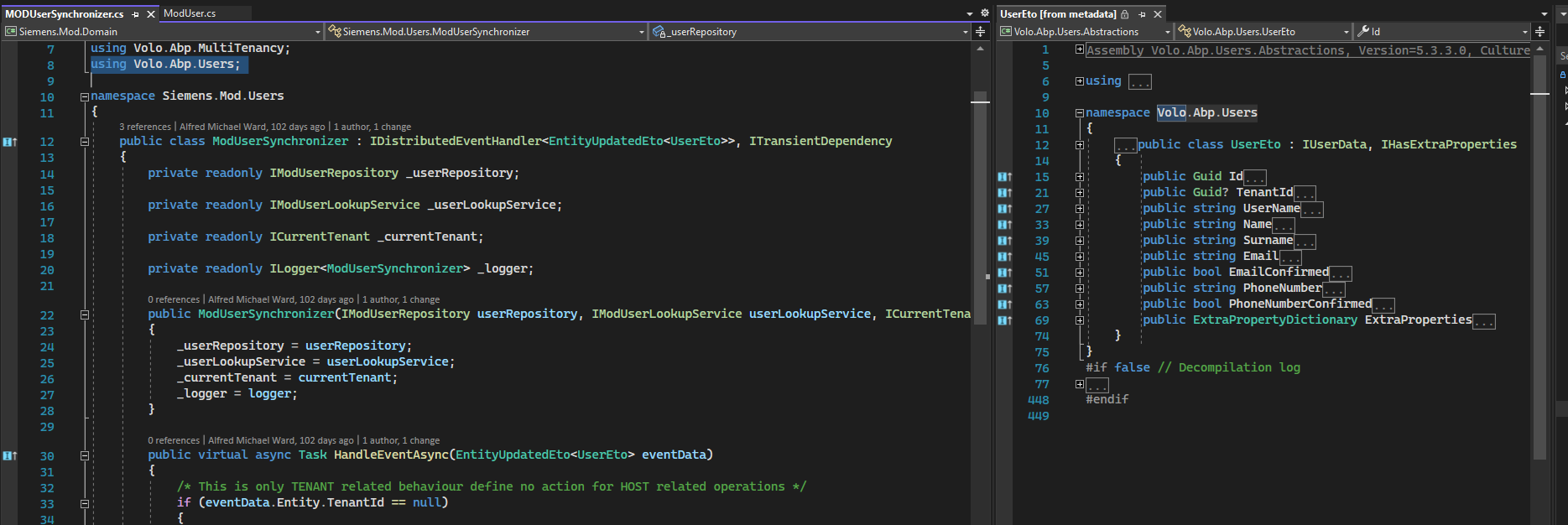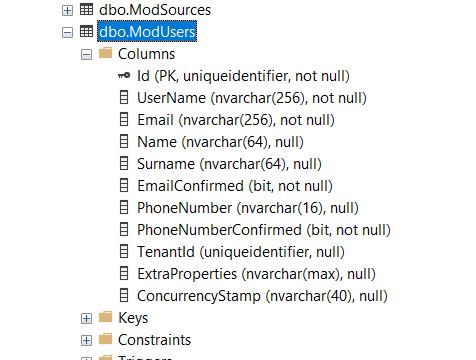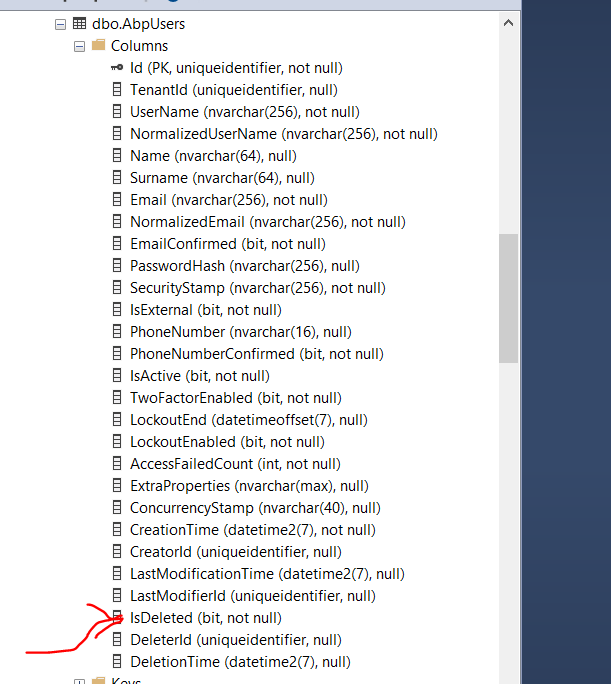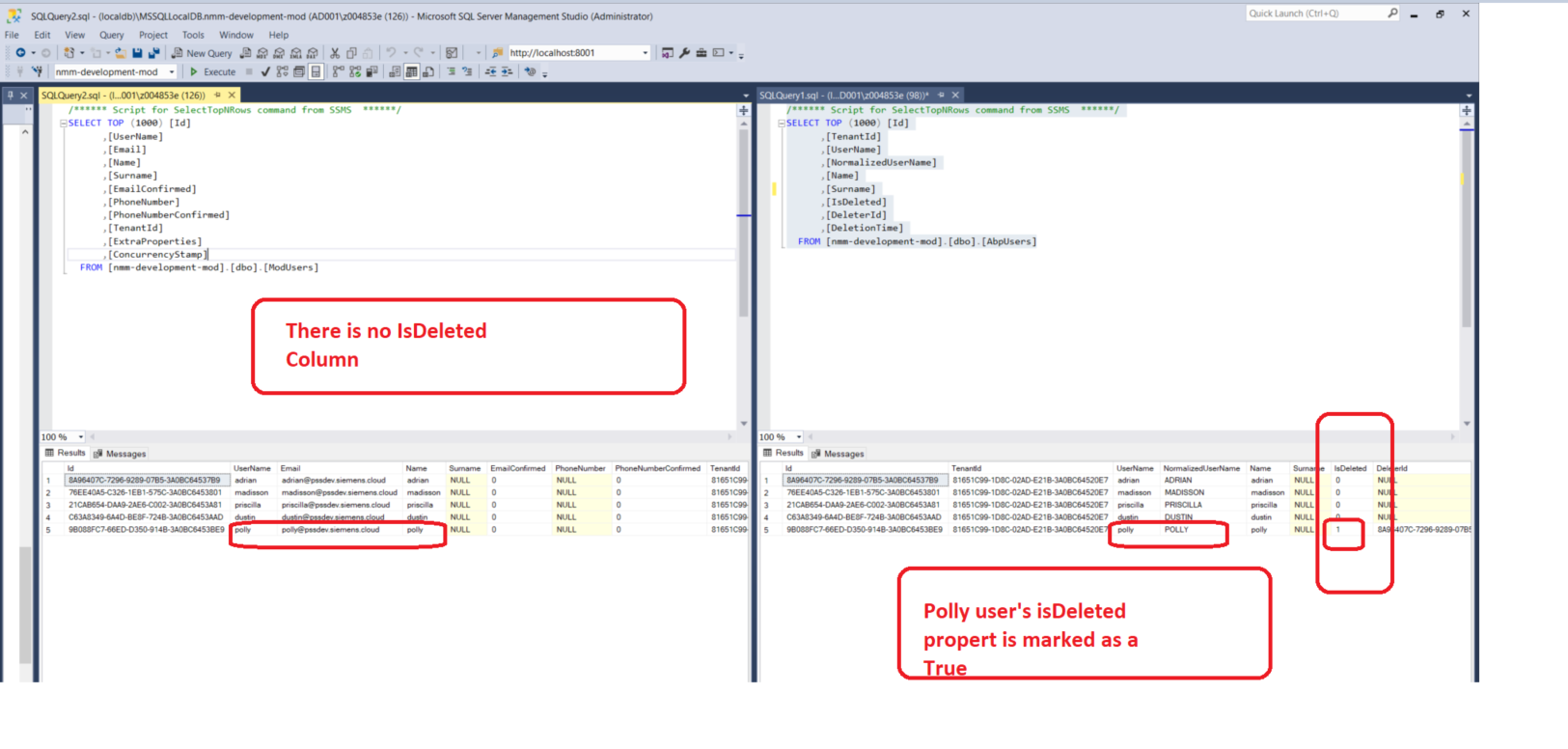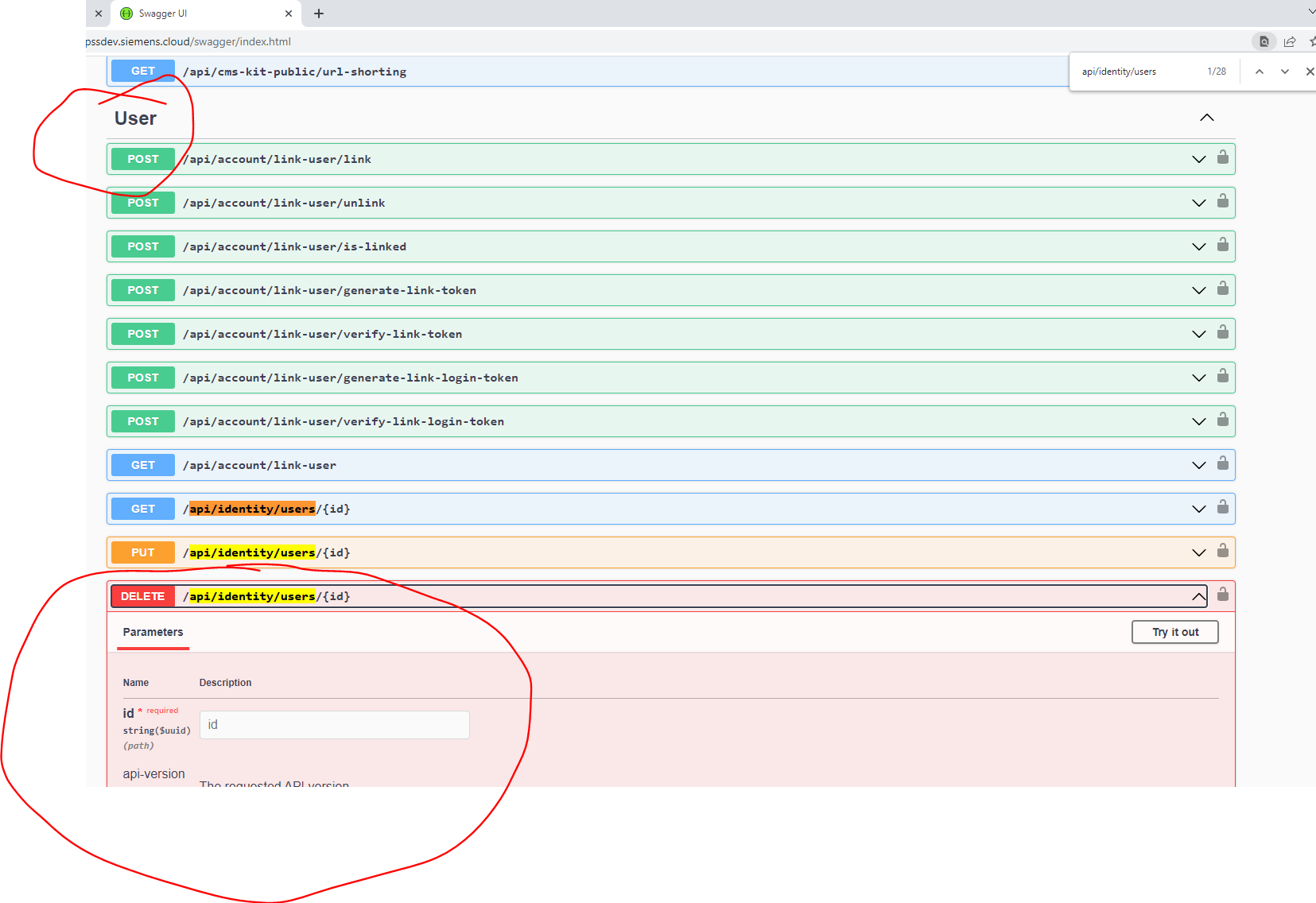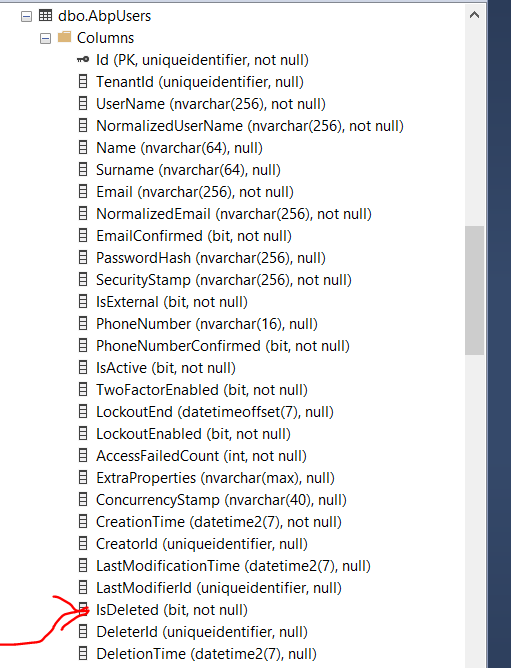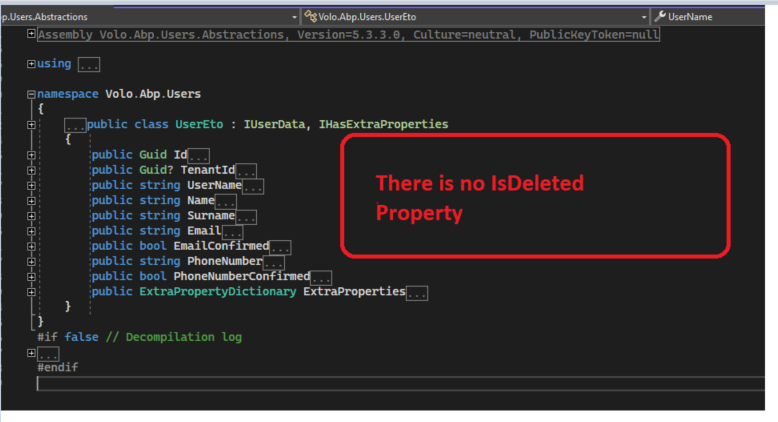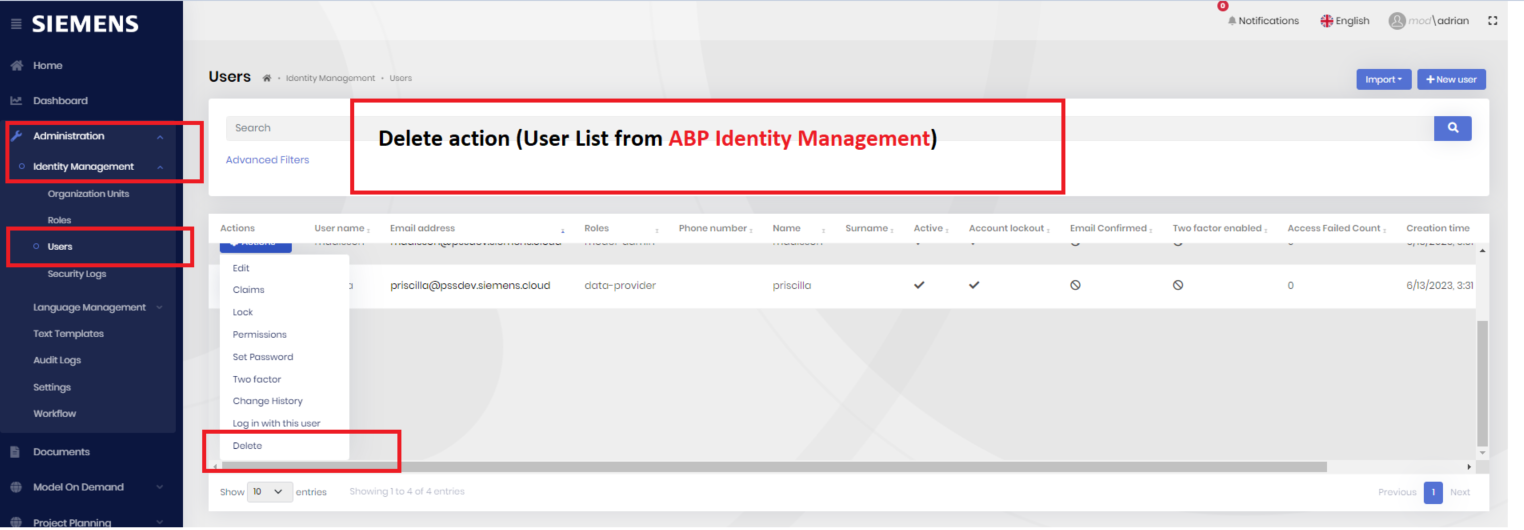Hi,
We have own user entity and we want to always sync with ABPUser table. So. We used user synchronize method. There is no problem with user add or update operation. But, when we delete user from identity ABPUser table, ABP make soft delete and marked as a IsDeleted column is true. But Volo.Abp.Users.UserEto does not contains IsDeleted property so EntityUpdatedEto<UserEto> can not be triggered in user delete operation. As a result, we can not provide to synchronization. When the user is deleted from ABPUser, we continue to see that user in our module user table.
Can you add IsDeleted property to your UserEto class or give an another advice to solve this problem?
Thanks
Check the docs before asking a question: https://docs.abp.io/en/commercial/latest/ Check the samples, to see the basic tasks: https://docs.abp.io/en/commercial/latest/samples/index The exact solution to your question may have been answered before, please use the search on the homepage.
If you're creating a bug/problem report, please include followings:
- ABP Framework version: v5.3.3
- UI type: / MVC /
- DB provider: EF Core /
- Tiered (MVC) or Identity Server Separated (Angular): yes /
- Exception message and stack trace:
- Steps to reproduce the issue:"
8 Answer(s)
-
0
Hi, can you share exact screenshot or steps to reproduce this issue?
-
0
Hi, can you share exact screenshot or steps to reproduce this issue?
We have custom user entity(ModUsers). And we always listen to ABPUser table by using IDistributedEventHandler<EntityUpdatedEto<UserEto>>. And we aim to sync with our custom user data and ABPUser data in every cases.
We can catch all changes in user creation and modification from ABPUser table. But, ABP make soft delete and marked as a IsDeleted column is true when user delete operation. But, Volo.Abp.Users.UserEto does not contains IsDeleted property so we can not catch a deleted user. It is not falling to IDistributedEventHandler<EntityUpdatedEto<UserEto>>. Because there is no IsDeleted property in your UserEto class.
I shared the all necessary images above.
Can you add IsDeleted property to your UserEto ?
-
0
Hi,
can you please handle
EntityDeletedEto<T> is published when an entity of type T was deletedjust like you have handledEntityUpdatedEto<T>Please see the documentation here https://docs.abp.io/en/abp/latest/Distributed-Event-Bus#event-types
-
0
Hi,
can you please handle
EntityDeletedEto<T> is published when an entity of type T was deletedjust like you have handledEntityUpdatedEto<T>Please see the documentation here https://docs.abp.io/en/abp/latest/Distributed-Event-Bus#event-types
Hi,
ABP User Delete endpoint (api/identity/users/{id}) makes just a SOFT DELETE (not a Hard Delete). Actually, it is a update operation (not a delete operation). IsDeleted property is marked as a TRUE by ABP when we request to delete user endpoint.
So it is not a delete operation and it is a update operation. We should not use a EntityDeletedEto<T>. We need to IsDeleted property in Volo.Abp.Users.UserEto.
Also I tried using it as you said anyway. But as I said, this api/identity/users/{id} api does a soft delete operation, not a hard delete. Therefore, EntityUpdatedEto<T> should be used, not EntityUpdatedEto<T>. Therefore, I think that the isDeleted field should be added to Volo.Abp.Users.UserEto.
-
0
Hi, Just for your information there is HardDeleteAsync method using which you can permanently delete the entity record from database. can you please check this link https://docs.abp.io/en/abp/latest/Repositories
Here EntityDeletedEto is trigger when a delete operation is called, even if it is a soft delete it is an delete operation, if you want your moduser to have soft delete please read more on https://docs.abp.io/en/abp/latest/Data-Filtering#isoftdelete
Here is a video showing delete triggers. Click Here
Thanks,
-
0
Hi, Just for your information there is HardDeleteAsync method using which you can permanently delete the entity record from database. can you please check this link https://docs.abp.io/en/abp/latest/Repositories
Here EntityDeletedEto is trigger when a delete operation is called, even if it is a soft delete it is an delete operation, if you want your moduser to have soft delete please read more on https://docs.abp.io/en/abp/latest/Data-Filtering#isoftdelete
Hi,
Thank you for your example. Can you show me your delete api request, please? Because, we use "api/identity/users/{id}" this endpoint from ABP Identity Management. And, it doesn't trigger to EntityDeletedEto.
I mean that, I don't want to hard delete or create another delete api. We just use a ABP Identity Management User Delete Action request. And I will continue to delete action from ABP Identity Management. So, Can you check your (api/identity/users/{id}) endpoint, please? Your user delete endpoint makes a soft delete.
Or, Can you give an example by using your (api/identity/users/{id}) as you did above ?
Thanks,
-
0
Hi,
Here you can see that this the same endpoint Click Here
-
0
Hi,
Here you can see that this the same endpoint Click Here
Thank you so much, I will try again :)
